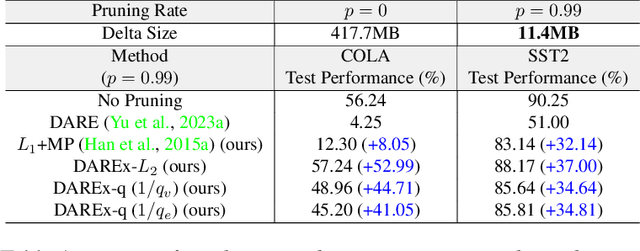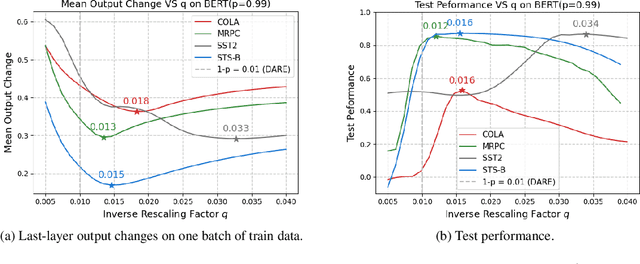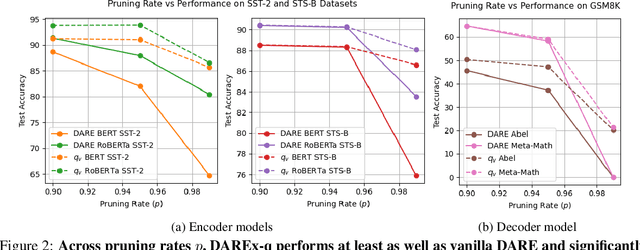Minghui Chen
refer to the report for detailed contributions
HunyuanWorld 1.0: Generating Immersive, Explorable, and Interactive 3D Worlds from Words or Pixels
Jul 29, 2025Abstract:Creating immersive and playable 3D worlds from texts or images remains a fundamental challenge in computer vision and graphics. Existing world generation approaches typically fall into two categories: video-based methods that offer rich diversity but lack 3D consistency and rendering efficiency, and 3D-based methods that provide geometric consistency but struggle with limited training data and memory-inefficient representations. To address these limitations, we present HunyuanWorld 1.0, a novel framework that combines the best of both worlds for generating immersive, explorable, and interactive 3D scenes from text and image conditions. Our approach features three key advantages: 1) 360{\deg} immersive experiences via panoramic world proxies; 2) mesh export capabilities for seamless compatibility with existing computer graphics pipelines; 3) disentangled object representations for augmented interactivity. The core of our framework is a semantically layered 3D mesh representation that leverages panoramic images as 360{\deg} world proxies for semantic-aware world decomposition and reconstruction, enabling the generation of diverse 3D worlds. Extensive experiments demonstrate that our method achieves state-of-the-art performance in generating coherent, explorable, and interactive 3D worlds while enabling versatile applications in virtual reality, physical simulation, game development, and interactive content creation.
Can Textual Gradient Work in Federated Learning?
Feb 27, 2025Abstract:Recent studies highlight the promise of LLM-based prompt optimization, especially with TextGrad, which automates differentiation'' via texts and backpropagates textual feedback. This approach facilitates training in various real-world applications that do not support numerical gradient propagation or loss calculation. In this paper, we systematically explore the potential and challenges of incorporating textual gradient into Federated Learning (FL). Our contributions are fourfold. Firstly, we introduce a novel FL paradigm, Federated Textual Gradient (FedTextGrad), that allows clients to upload locally optimized prompts derived from textual gradients, while the server aggregates the received prompts. Unlike traditional FL frameworks, which are designed for numerical aggregation, FedTextGrad is specifically tailored for handling textual data, expanding the applicability of FL to a broader range of problems that lack well-defined numerical loss functions. Secondly, building on this design, we conduct extensive experiments to explore the feasibility of FedTextGrad. Our findings highlight the importance of properly tuning key factors (e.g., local steps) in FL training. Thirdly, we highlight a major challenge in FedTextGrad aggregation: retaining essential information from distributed prompt updates. Last but not least, in response to this issue, we improve the vanilla variant of FedTextGrad by providing actionable guidance to the LLM when summarizing client prompts by leveraging the Uniform Information Density principle. Through this principled study, we enable the adoption of textual gradients in FL for optimizing LLMs, identify important issues, and pinpoint future directions, thereby opening up a new research area that warrants further investigation.
Hunyuan3D 2.0: Scaling Diffusion Models for High Resolution Textured 3D Assets Generation
Jan 21, 2025



Abstract:We present Hunyuan3D 2.0, an advanced large-scale 3D synthesis system for generating high-resolution textured 3D assets. This system includes two foundation components: a large-scale shape generation model -- Hunyuan3D-DiT, and a large-scale texture synthesis model -- Hunyuan3D-Paint. The shape generative model, built on a scalable flow-based diffusion transformer, aims to create geometry that properly aligns with a given condition image, laying a solid foundation for downstream applications. The texture synthesis model, benefiting from strong geometric and diffusion priors, produces high-resolution and vibrant texture maps for either generated or hand-crafted meshes. Furthermore, we build Hunyuan3D-Studio -- a versatile, user-friendly production platform that simplifies the re-creation process of 3D assets. It allows both professional and amateur users to manipulate or even animate their meshes efficiently. We systematically evaluate our models, showing that Hunyuan3D 2.0 outperforms previous state-of-the-art models, including the open-source models and closed-source models in geometry details, condition alignment, texture quality, and etc. Hunyuan3D 2.0 is publicly released in order to fill the gaps in the open-source 3D community for large-scale foundation generative models. The code and pre-trained weights of our models are available at: https://github.com/Tencent/Hunyuan3D-2
Local Superior Soups: A Catalyst for Model Merging in Cross-Silo Federated Learning
Oct 31, 2024



Abstract:Federated learning (FL) is a learning paradigm that enables collaborative training of models using decentralized data. Recently, the utilization of pre-trained weight initialization in FL has been demonstrated to effectively improve model performance. However, the evolving complexity of current pre-trained models, characterized by a substantial increase in parameters, markedly intensifies the challenges associated with communication rounds required for their adaptation to FL. To address these communication cost issues and increase the performance of pre-trained model adaptation in FL, we propose an innovative model interpolation-based local training technique called ``Local Superior Soups.'' Our method enhances local training across different clients, encouraging the exploration of a connected low-loss basin within a few communication rounds through regularized model interpolation. This approach acts as a catalyst for the seamless adaptation of pre-trained models in in FL. We demonstrated its effectiveness and efficiency across diverse widely-used FL datasets. Our code is available at \href{https://github.com/ubc-tea/Local-Superior-Soups}{https://github.com/ubc-tea/Local-Superior-Soups}.
DARE the Extreme: Revisiting Delta-Parameter Pruning For Fine-Tuned Models
Oct 12, 2024



Abstract:Storing open-source fine-tuned models separately introduces redundancy and increases response times in applications utilizing multiple models. Delta-parameter pruning (DPP), particularly the random drop and rescale (DARE) method proposed by Yu et al., addresses this by pruning the majority of delta parameters--the differences between fine-tuned and pre-trained model weights--while typically maintaining minimal performance loss. However, DARE fails when either the pruning rate or the magnitude of the delta parameters is large. We highlight two key reasons for this failure: (1) an excessively large rescaling factor as pruning rates increase, and (2) high mean and variance in the delta parameters. To push DARE's limits, we introduce DAREx (DARE the eXtreme), which features two algorithmic improvements: (1) DAREx-q, a rescaling factor modification that significantly boosts performance at high pruning rates (e.g., >30 % on COLA and SST2 for encoder models, with even greater gains in decoder models), and (2) DAREx-L2, which combines DARE with AdamR, an in-training method that applies appropriate delta regularization before DPP. We also demonstrate that DAREx-q can be seamlessly combined with vanilla parameter-efficient fine-tuning techniques like LoRA and can facilitate structural DPP. Additionally, we revisit the application of importance-based pruning techniques within DPP, demonstrating that they outperform random-based methods when delta parameters are large. Through this comprehensive study, we develop a pipeline for selecting the most appropriate DPP method under various practical scenarios.
Nonparametric End-to-End Probabilistic Forecasting of Distributed Generation Outputs Considering Missing Data Imputation
Mar 31, 2024Abstract:In this paper, we introduce a nonparametric end-to-end method for probabilistic forecasting of distributed renewable generation outputs while including missing data imputation. Firstly, we employ a nonparametric probabilistic forecast model utilizing the long short-term memory (LSTM) network to model the probability distributions of distributed renewable generations' outputs. Secondly, we design an end-to-end training process that includes missing data imputation through iterative imputation and iterative loss-based training procedures. This two-step modeling approach effectively combines the strengths of the nonparametric method with the end-to-end approach. Consequently, our approach demonstrates exceptional capabilities in probabilistic forecasting for the outputs of distributed renewable generations while effectively handling missing values. Simulation results confirm the superior performance of our approach compared to existing alternatives.
Universal Debiased Editing on Foundation Models for Fair Medical Image Classification
Mar 16, 2024



Abstract:In the era of Foundation Models' (FMs) rising prominence in AI, our study addresses the challenge of biases in medical images while using FM API, particularly spurious correlations between pixels and sensitive attributes. Traditional methods for bias mitigation face limitations due to the restricted access to web-hosted FMs and difficulties in addressing the underlying bias encoded within the FM API. We propose an U(niversal) D(ebiased) E(diting) strategy, termed UDE, which generates UDE noise to mask such spurious correlation. UDE is capable of mitigating bias both within the FM API embedding and the images themselves. Furthermore, UDE is suitable for both white-box and black-box FM APIs, where we introduced G(reedy) (Z)eroth-O(rder) (GeZO) optimization for it when the gradient is inaccessible in black-box APIs. Our whole pipeline enables fairness-aware image editing that can be applied across various medical contexts without requiring direct model manipulation or significant computational resources. Our empirical results demonstrate the method's effectiveness in maintaining fairness and utility across different patient groups and diseases. In the era of AI-driven medicine, this work contributes to making healthcare diagnostics more equitable, showcasing a practical solution for bias mitigation in pre-trained image FMs.
FedSoup: Improving Generalization and Personalization in Federated Learning via Selective Model Interpolation
Jul 20, 2023Abstract:Cross-silo federated learning (FL) enables the development of machine learning models on datasets distributed across data centers such as hospitals and clinical research laboratories. However, recent research has found that current FL algorithms face a trade-off between local and global performance when confronted with distribution shifts. Specifically, personalized FL methods have a tendency to overfit to local data, leading to a sharp valley in the local model and inhibiting its ability to generalize to out-of-distribution data. In this paper, we propose a novel federated model soup method (i.e., selective interpolation of model parameters) to optimize the trade-off between local and global performance. Specifically, during the federated training phase, each client maintains its own global model pool by monitoring the performance of the interpolated model between the local and global models. This allows us to alleviate overfitting and seek flat minima, which can significantly improve the model's generalization performance. We evaluate our method on retinal and pathological image classification tasks, and our proposed method achieves significant improvements for out-of-distribution generalization. Our code is available at https://github.com/ubc-tea/FedSoup.
Forgettable Federated Linear Learning with Certified Data Removal
Jun 03, 2023



Abstract:Federated learning (FL) is a trending distributed learning framework that enables collaborative model training without data sharing. Machine learning models trained on datasets can potentially expose the private information of the training data, revealing details about individual data records. In this study, we focus on the FL paradigm that grants clients the ``right to be forgotten''. The forgettable FL framework should bleach its global model weights as it has never seen that client and hence does not reveal any information about the client. To this end, we propose the Forgettable Federated Linear Learning (2F2L) framework featured with novel training and data removal strategies. The training pipeline, named Federated linear training, employs linear approximation on the model parameter space to enable our 2F2L framework work for deep neural networks while achieving comparable results with canonical neural network training. We also introduce FedRemoval, an efficient and effective removal strategy that tackles the computational challenges in FL by approximating the Hessian matrix using public server data from the pretrained model. Unlike the previous uncertified and heuristic machine unlearning methods in FL, we provide theoretical guarantees by bounding the differences of model weights by our FedRemoval and that from retraining from scratch. Experimental results on MNIST and Fashion-MNIST datasets demonstrate the effectiveness of our method in achieving a balance between model accuracy and information removal, outperforming baseline strategies and approaching retraining from scratch.
VITA: A Multi-Source Vicinal Transfer Augmentation Method for Out-of-Distribution Generalization
Apr 25, 2022



Abstract:Invariance to diverse types of image corruption, such as noise, blurring, or colour shifts, is essential to establish robust models in computer vision. Data augmentation has been the major approach in improving the robustness against common corruptions. However, the samples produced by popular augmentation strategies deviate significantly from the underlying data manifold. As a result, performance is skewed toward certain types of corruption. To address this issue, we propose a multi-source vicinal transfer augmentation (VITA) method for generating diverse on-manifold samples. The proposed VITA consists of two complementary parts: tangent transfer and integration of multi-source vicinal samples. The tangent transfer creates initial augmented samples for improving corruption robustness. The integration employs a generative model to characterize the underlying manifold built by vicinal samples, facilitating the generation of on-manifold samples. Our proposed VITA significantly outperforms the current state-of-the-art augmentation methods, demonstrated in extensive experiments on corruption benchmarks.
 Add to Chrome
Add to Chrome Add to Firefox
Add to Firefox Add to Edge
Add to Edge